Good photographers learn how to crop the extraneous details from the outer edges of a picture to improve its quality. Similarly, you can improve the overall picture of your garden when you impose a frame around its views.
The classic elements of design, such as line, shape, texture and color, are useful tools when composing and editing the desired scene. Strive for simplicity, because an uncomplicated selection of plants, a cohesive bloom and foliage palette, and structures that relate to your home's architecture are key.
The frame through which you observe and enjoy near and distant views may have vertical components — defined by doorways, tall plants or an opening in a fence. Arches and arbors overhead or pathways and stepping stones below form the horizontal plane. Think of each as an important piece of that overall picture as you direct the viewer's eye toward specific scenes.
A pleasing
view offers an area of the landscape to be seen — it commands attention when framed by ornamental trees, arbors or trellises. A pleasing
vista is usually savored from a distance, allowing you to borrow nature's beauty as a backdrop for your own garden.
Here are some of my favorite images that capture the spirit of this concept. Your garden will feel magnanimous when you open it up to natural or cultivated landscapes.
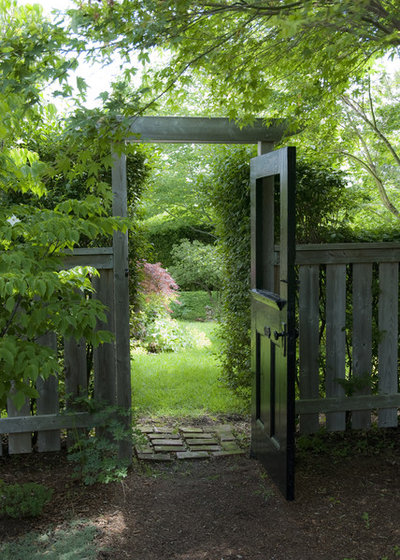
ROOMS & BLOOMS
Portals, entrances and transitions. When there is no distant or territorial view to appreciate, you can conjure an interior view. Garden designers use visual tricks to draw and direct the eye — and you can adopt a similar strategy in your own backyard. Here, a full-scale doorway has been inserted into a fence. When open, it reveals a lovely scene within.
With thoughtful planning and placement of plants, the designer has created a spectacular visual treat that invites further exploration. The fence and doorway may be entirely functional, but they define and frame the way one observes the garden.
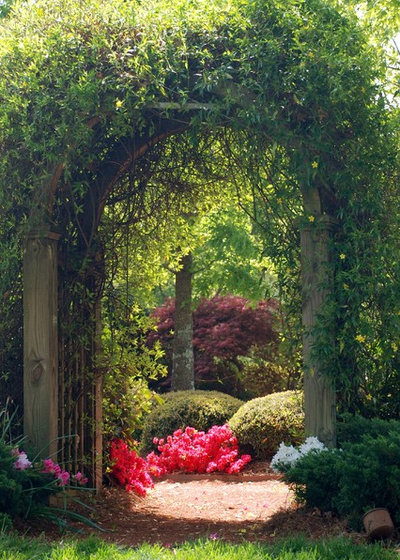
Outside Landscape Group
Highlight nature. Peer through this vine-clad arbor and observe layer upon layer of shape, form, color and texture. Each plant is highlighted in sharp relief because of the way sunlight dances across its form.
When you plan an island bed, lay out a perennial border or place a specimen tree, consider how the sun rises or sets in your landscape. Backlighting — nature's wonderful gift of illumination — can thoroughly change the mood of a garden view. Similarly, the light at dawn or dusk can magnify the intensity of a vignette, making it more alluring at that special moment when the daylight changes.
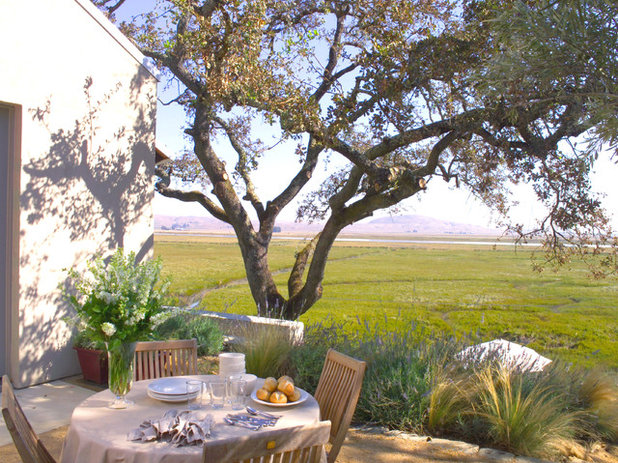
Sutton Suzuki Architects
Open up views. Thoughtful pruning or editing can make room for a beautiful distant scene. Instead of cutting down a large tree that may be obstructing your view, invest in the expertise of a certified arborist who can open up view zones with targeted branch removal, allowing you to enjoy both the tree and the view beyond.
Here, the preserved tree is essential to the success of this design. Not only does it protect and shade the outdoor patio space, but it deemphasizes the strong architecture of the home and draws one's eye toward the meadow and hills in the distance. Sublime!
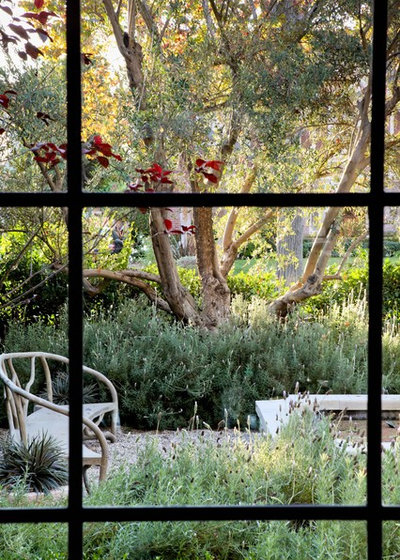
Studio William Hefner
Enhance sight lines. As your eye travels through a window or doorway into the garden, follow the direct axis. Where does your gaze rest? How does your eye move around the garden when it is framed by an open shutter or a divided windowpane?
Emphasize the importance of these perspectives by displaying furniture, plants or ornamentation to create a well-defined scene. While it may be minor in the grand scheme of your landscape, that little stage outside your window is a valuable piece of real estate in the garden.
With this strategy, it's possible (and desirable) that each room of your home will offer those inside a beautiful vignette to observe.
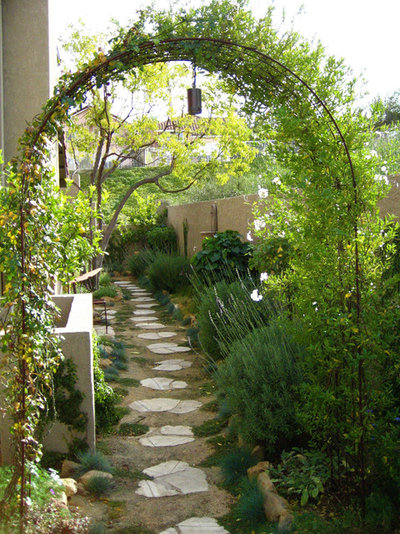
Shirley Bovshow
Balance the composition. Use symmetry or asymmetry to frame a view that's near or distant, giving the viewer a restful (living) picture to enjoy.
You can get a formal effect with symmetrical plantings, such as a pair of columnar conifers that indicate an opening to a garden path. Or use an arbor or trellis, centered over a pathway, as is done so beautifully here.
Suggest asymmetrical balance with natural or man-made sentinels of equal visual weight. For example, you can offset a large tree on one side of the view with a grouping of garden furniture on the opposite side. The items may be different, but together they create an appealing balance.
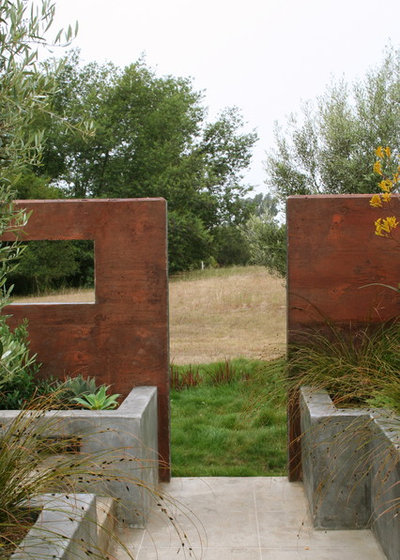
Kathleen Shaeffer Design, Exterior Spaces
Beckon with passageways. Highlight your garden's best views by creating places to look and locations to pursue, allowing the delightful destination beyond to be perceived as an impactful extension of the garden's visual reach.
Employ techniques that frame and define: An opening in a dense hedge ignites curiosity about what's beyond. Here, two such openings in a wall — a doorway and a "window" — are attention-grabbing devices. The distant garden is half hidden, but it is endowed with heightened drama.
The designer has created a view in what was once an unnoticed area of the landscape.
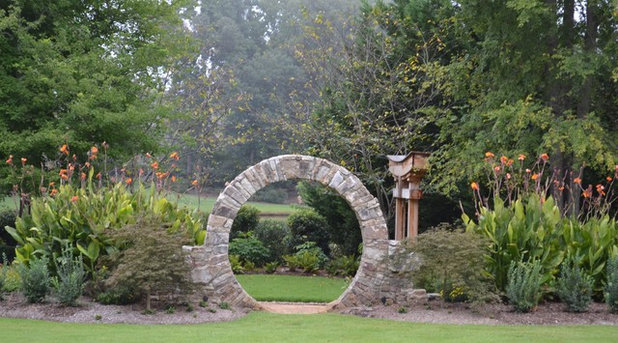 Make it ornamental.
Make it ornamental. This portal emphsizes the distant vista, but it is itself a sculptural object to view and appreciate. Even in the winter months, when the blooms have faded, leaves have dropped from deciduous trees and perennials have died back, this incredible stone moon gate is an essential design element of the landscape.
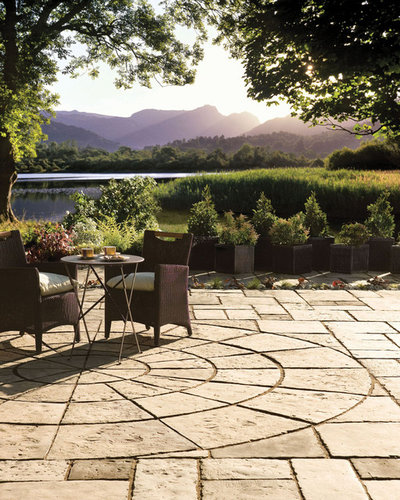
Nicolock Paving Stones and Retaining Walls
An unforgettable vista. An enthralling distant scene is integrated into this lovely landscape with a light hand. Nothing here is contrived, but each aspect of the domestic landscape feels in harmony with the water, hills and naturalized plantings in the distance.
This design works because of the placement and execution of the stone patio, which defines the outdoor gathering area. The plantings at its edge are intentionally kept low so they do not obscure the view of the water. The mature trees on either side are lightly pruned to keep low-hanging branches out of the sight of those magnificent hills.
More: 10 Elements of an Exuberantly Abundant Garden





